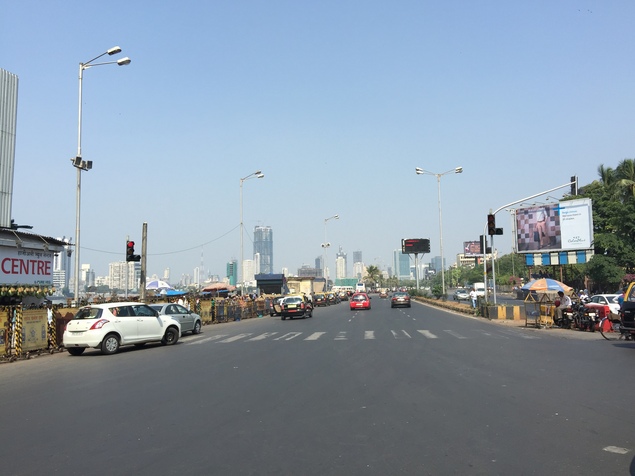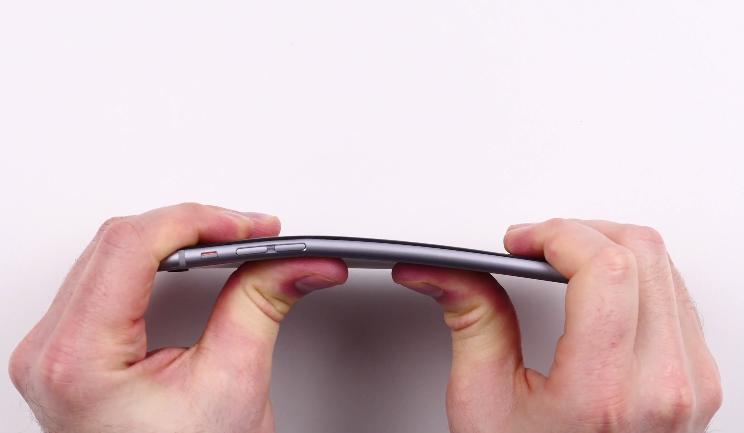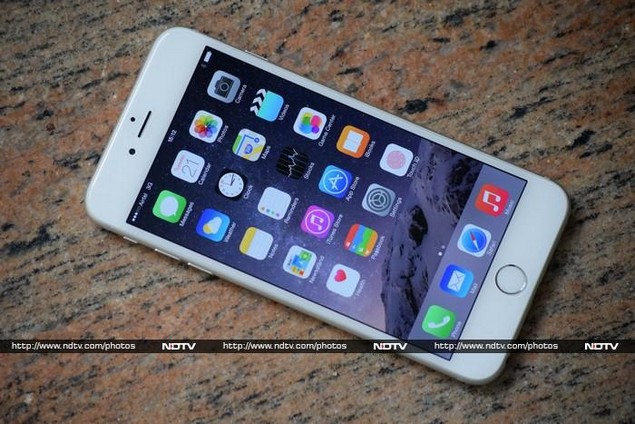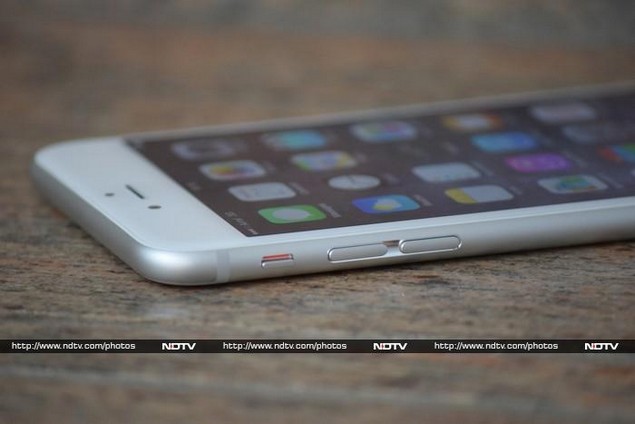The iPhone 6 Plus breaks a lot of the rules and defies a lot of the
logic that Apple has stuck to for a number of years. It's a copycat
device, it chases a market that the company did not create for itself,
it introduces fragmentation in a previously restrained product lineup,
and it doesn't immediately give you the sense that you need to own one.
In short, it's the most un-Apple-like Apple product we've seen in a
very, very long time.
The famously selective company (many would
call it arrogant) repeatedly dismissed and even ridiculed the idea of
outsized smartphones for many years; defying industry trends and
sticking with a smaller shape that was easy to use in one hand despite
an obvious shift in the market.
UK Dissertation Services. In the past,
Apple has been defined by
its refusal to participate in such "bubble" markets and has instead
created its own - it suffered endless criticism for being the only PC
manufacturer to never have offered a netbook, but then proceeded to
destroy that entire product category by introducing the iPad and
defining the future of touch-first portable devices.
Now, that
philosophy seems to have been discarded completely. Apple has done a 180
and is now chasing a market created by one of its fiercest rivals.
The iPhone 6 Plus is many years late to the phablet party - Apple
couches this by saying it only makes moves when it knows it's ready with
something truly brilliant, but it isn't hard to see this as a very
reactionary product. In fact, this is one of the rare Apple products
that will be defined by its competitors. Apple seems confident that the
iPhone 6 Plus will work against the Samsung Galaxy Note 4, LG G3 (Review | Photos) and
others in this size class. Let's see if that holds true, or if Apple
will come out of this battle looking like a sore loser.
Look and Feel
The
iPhone 6 Plus is pretty much identical to the iPhone 6 in terms of
styling and proportions, but is of course larger. It's significantly
bigger than the iPhone 5s and absolutely towers over the 4S and earlier models - anyone who
has used an iPhone before will be a little thrown by its sheer size.
It's just awkward; like a teenager who's had a sudden growth spurt. It
fits in a trouser pocket but you'll always feel it there when walking
around.
Competitors in the Android space have moved to on-screen
controls and minimal bezels - the idea being that all attention should
be focused on the screen. That isn't the case here - there's a lot of
space both above and below the screen, necessitated by the physical Home
button with its integrated Touch ID sensor.
What does work for
the iPhone 6 Plus is how it feels. Apple hasn't in any way reduced the
amount of attention it pays to physical, material and construction
quality. The curved aluminium sides and rounded corners are a departure
from the iPhone 5- and 4-series, and feel better in the hand. The glass
front extends right to the edges and is also curved to meet the
aluminium frame - this makes it one of the most comfortable phones to
hold up to your ear, but leaves us slightly worried about potential
shattering if the phone is ever dropped.
The iPhone 6 Plus is also
amazingly thin. It isn't all that light, but the weight is very nicely
balanced. The power button has been moved to the right edge, which is
another touch pioneered by competitors. Everything else is the same as
before - volume and mute controls on the left, SIM card tray on the
right, and headset socket, Lightning port and speaker cutout on the
bottom.
Around the sides and back, you'll see plastic lines
framing the top and bottom of the phone, which are necessary to let the
various antennas work through the metal body. This is the only part of
the device that looks a little ugly - not such a huge crime, but
disappointing by Apple standards. Also on the back is the
now-famous
protruding camera, which isn't as prominent as it is on the
regular-sized iPhone 6. We felt it catch on things in our pocket once or
twice, but otherwise it was a non-issue.
Specifications
Apple
doesn't say much about the exact specifications of its new A8
processor, other than the fact that it's 64-bit and works alongside a
dedicated motion co-processor (the M8) so that sensor input can be
processed constantly without wasting power. Benchmark apps report that
the CPU has two cores, and speculation online pins the speed at 1.4GHz.
Apple prefers talking about power efficiency, and we know that despite
the transistor count increasing to two billion, the 20nm manufacturing
process brings about significant improvements to battery life. In terms
of CPU specifications alone, the A8 pales in comparison to Qualcomm's
flagship Snapdragon 800 series. There's 1GB of RAM, which, again, is
well below the 3GB standard of modern Android flagships. We'll just have
to let the benchmark tests decide how much difference these things
make.
The iPhone 6 Plus is defined by its screen, though again
we're dealing with specs that seem inferior to the competition. The
"Retina HD" display has a resolution of 1080x1920 pixels, which was
standard for other, smaller flagship phones over a year ago, and has
made its way down to quite a few budget models as well now. We've seen
better in terms of sharpness, but we are still impressed with the iPhone
6 Plus in terms of colour accuracy, brightness and vibrancy.
Apple
continues its stubborn refusal to allow storage expansion. The 16GB
model costs Rs. 62,500 which is not a small amount by any standard, but
you'll still be constrained in terms of apps, games, music, movies,
photos and recorded videos. It's ridiculous to have a huge screen,
powerful processor and brilliant camera but not be able to do anything
with them. You'll have to shell out at least another Rs. 9,000 for the
64GB model which makes at least some amount of sense. Of all the ways in
which Apple should have emulated its competition, we can't think of a more tragic missed opportunity.
New to the iPhone 6 generation is a
barometer which allows the M8 co-processor to detect changes in
elevation and better track physical activity. There's also NFC, though
it works only with the Apple Pay system has only just launched in the US
and is not available anywhere else yet. Wi-Fi has been updated to the
faster ac standard and more LTE bands are supported (the variant sold
here also works with the Indian 2300MHz band).
Software and the big screen
Once
again, Samsung's Galaxy Note series jumps to mind as the obvious point
of comparison, thanks to features that let you run apps side by side,
trigger commands with a stylus, multitask, and do dozens of other handy
little things. Samsung could even be accused of going overboard, but the
fact is that it recognises how many different things you can do with a
big, powerful Android device. LG, Sony, HTC and others aren't far behind
either.
Apple, on the other hand, has barely made any
modifications to iOS to take advantage of the big screen. Certain apps
can display an iPad-style sidebar in landscape mode, and the landscape
keyboard has a few extra shortcut keys on either side. That's about it -
everything else is simply iOS as we already know it, just a whole lot
bigger. Apps which haven't been optimised look quite comical, but even
the OS seems to be uncomfortable in its new role. There's far too much
white space in some places, and things are too big in others.
For
the sake of consistency across products, Apple has decided not to add
functionality or change the layout of things such as the Control Centre
and Music app. There isn't even an extra numerical row on the keyboard (though third-party solutions are now available).
Within many apps, there is more content where it can be accommodated.
You can see multiple columns in the App Store, Safari's Reader View is a
lot more useful, and most apps can be used in either portrait or
landscape mode even if that isn't possible on regular-sized iPhones.
Most of the best software touches are thanks to iOS 8, and are not exclusive to the iPhone 6 Plus. These include app extensions for better multitasking and sharing, Notification Centre widgets for information at a glance, iTunes account family sharing, the Health app for tracking physical activity and nutrition, and plenty of other little tweaks and improvements that all iOS users can enjoy.
The one concession is Reachability - a new gesture that cleverly
pulls everything on screen about halfway down for a few moments so you
can reach buttons or links without stretching your thumbs too much. You
have to lightly double-tap the Touch ID sensor to trigger it. It isn't
always quicker or more practical than simply reaching out a finger,
since you're balancing this phone in two hands all the time anyway.
Third-party
apps are a mixed bag - those that have been updated are all right, but
older ones just look ridiculous. Most games look great and videos of
course benefit the most. Ebooks in flexible formats and even static PDF
pages are a lot easier to handle. Pages, Numbers, Keynote, Garage Band
and iMovie are all easier, and in some ways more rewarding, to use.
It
seems as though there's a lot of missed opportunity here, and we
wouldn't be surprised to see Apple venture further out of its comfort
zone in the future. Much like basic functionality was added to the
original iPhone over the course of several years, Apple might be taking a
cautious approach and easing in to things in this new product category.
Still,
that doesn't help anyone who is considering buying an iPhone 6 Plus
here and now. iOS is by nature more restricted than Android, and the
gulf now feels a lot worse. Put simply, Android options have an edge in
terms of functionality, while the big iPhone is pretty much just a big
iPhone.
Camera
iPhones have always had good cameras, and
Apple has prided itself on improving quality each year even if the
resolution stays static. The emphasis this time is on video - continuous
stabilisation and autofocus are new, and slow-mo can now be switched
between 120fps and 240fps. Apple also promises quicker autofocus
locking, improved colour accuracy and low-light performance. The iPhone 6
Plus stands apart from its smaller sibling in that it supports optical
image stabilisation - the lens actively moves to compensate for slight
vibrations and shaky hands.

Apple has never given users much
control over camera settings, but that has changed a little with the
iPhone 6 generation and iOS 8. There are more controls on screen than
ever before, and others are less obvious. You can tap and hold to lock
the focus, but exposure can still be adjusted independently by tapping a
slider that appears. There's very little to say about the app - you
might prefer third-party alternatives if you like having lots of
controls at your disposal.
The size and shape of the iPhone 6 Plus
make it comfortable to hold while taking photos. The thick screen
borders give you enough space to put your thumbs while framing shots. We
enjoyed playing with the slow-mo and time lapse modes but, predictably,
our results weren't anywhere near as impressive as Apple's demo videos.
Surprisingly, Apple hasn't bothered supporting 4K video - it
probably doesn't believe users should want such functionality and has
never allowed users to choose between image and video size options. This
puts Apple firmly behind its competitors, and is especially
disappointing since Apple has used 4K video to show off the capabilities
and screens of its recent Macs. Anyway, it's unlikely that you'd be
able to record much 4K video on anything less than the 128GB model.
Image
quality really did impress us. We were very pleased with the iPhone 6
Plus's camera in low light as well as daylight. Subjects consistently
looked natural and details were excellent, with low noise. Subtle
textures and colour gradients came out without suffering too much
compression. On some occasions, we did feel that the 8-megapixel
resolution prevented us from resizing and cropping images in ways we
might have liked. For most people though, photos are only ever going to
be seen as-is on a phone, tablet or PC screen.
Performance
The
iPhone 6 Plus's specifications might not look competitive on paper, but
the real world is a different story altogether. This phone is
screamingly fast and it doesn't have any problem keeping up with Android
flagships. The UI is fluid, apps load quickly, and performance is
pretty much never a problem. We tried a few games such as Asphalt 8 and
Infinity Blade II and were very pleased with the results. Graphics look
incredible - we tried the Zen Garden demo which takes advantage of
Apple's new Metal API for graphics, and were impressed yet again.
Benchmark
scores were mostly good - 3DMark's Ice Storm and Ice Storm Extreme
tests were both maxed out, and we got a score of 18,101 in Ice Storm
Unlimited which is just a little higher than what the Sony Xperia Z3 (Review | Photos)
managed, but lower than the HTC One (M8)'s score. Another graphics
benchmark, GFXbench, returned a very good score of 40.9fps. SunSpider
posted an extraordinarily low time of 366.1ms. The iOS version of AnTuTu
gave us a shockingly good score - 49,353 - but it shouldn't be compared
directly to the results of Android phones, and in fact the app wasn't
optimised and detected the screen resolution as 640x1136 which makes us
slightly discount this result.
Videos play well although sound is a
little underwhelming. It's loud and doesn't distort, but is also quite
lifeless. We were much happier with sound through a headset than through
the single mono speaker on the iPhone's bottom - it's high time Apple
did something about this.
The screen is phenomenal at any angle.
It can get really bright and there's no problem using it outdoors in the
middle of the day. All in all, we can't blame Apple for choosing
1080x1920 over something higher - the problems with screen scaling are
all to do with software, not the screen itself.
Battery life was
also on the high side. We managed to play our test video in a loop for
11 hours, 4 minutes before the phone shut itself down automatically.
This means it should be possible to get more than a full day's use out
of this phone, including a bit of gaming.
Verdict
There
are plenty of people who will love the iPhone 6 Plus because they've
always wanted a larger iPhone. There are also those who have never
understood big phones and will not find any reason to if they use this
one. Apple is in someone else's shadow for the first time, and it shows -
the vision just isn't as clear as it should be. There's a lot that
needs to be done, especially in terms of software, to make this product
more useful. It might take Apple a while to get it right, in which case
we might as well wait for next year's inevitable refresh.
For most
people, it will be hard to decide between the iPhone 6 and the iPhone 6
Plus. Price is definitely a factor, but the two are nearly identical in
every way other than physical size. You don't lose any bragging rights
by choosing the iPhone 6, which is still a lot bigger than its
predecessors. You really don't have to jump all the way up to the big
model just to get the best one. We strongly suggest trying both at a
retail store to see which is more comfortable.
If you really want
to get good use out of an iPhone 6 Plus, we'd recommend paying
more up front for at least the 64GB version. If you have basic needs but
like the idea of a big phone that's easier to hold and type on, 16GB
will do. In either case, there are plenty of options on the Android side
of the fence - Samsung, for example, caters to the former group with
its Galaxy Note series and to the latter with its Galaxy Grand series,
and both are a lot less expensive.
So what is the appeal of
Apple's first giant phone after all is considered? It's a great device
if you're looking to replace your handheld gaming console, video camera,
tablet and smartphone with a single unit, and in that sense, it's a
more attractive product than the iPhone 6. However, you don't always
want to carry all those things around, and the iPhone 6 Plus will make
you feel as though you're doing exactly that.
Post Credit: gadgets.ndtv.com 


















